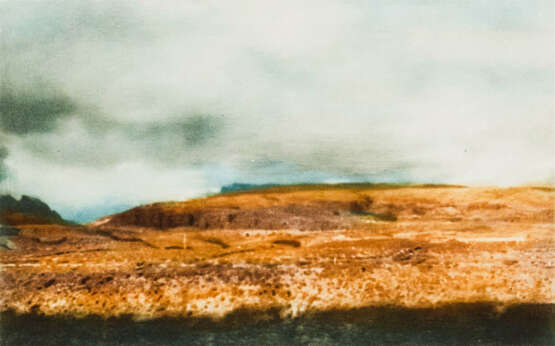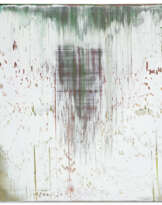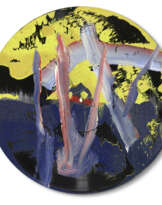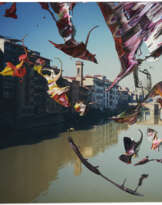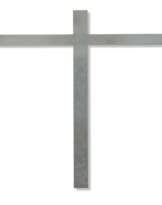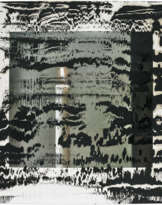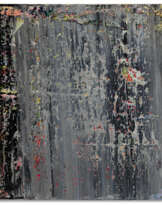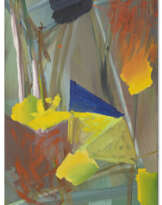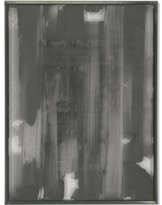ID 952222
Lot 100 | Gerhard Richter (1932 Dresden) (F)
Estimate value
€ 2 800 – 3 500
'Kanarische Landschaften I', sechs farbige Heliogravuren auf leichtem Maschinenbüttenkarton, 1971, 39 cm x 50 cm Blattmaß, signiert, 48/100 nummeriert, partiell minimal stockfleckig, aufgehellt, Blattränder leicht beschnitten, kleiner Einschnitt im Papier, Literatur: Wvz. Butin 39a
Gerhard Richter wurde 1932 in Dresden geboren. Nachdem der Künstler in Dresden und an der Düsseldorfer Akademie studierte, stellte er seine ersten Werke aus. Diese übersetzten die bekannten Zeitungsausschnitte in schwarz-weiße und verwischte Gestaltungsform. "Im Malen nach Fotovorlagen findet Richter seine Methode, um den Prozess des Malens in seinen Möglichkeiten auszuloten. Dabei ist das Werk von ständigen Veränderungen und Brüchen geprägt [...]". Ebendiese Inkonsequenz beschreibt auch sein Oeuvre, das durch gegensätzliche oder nebeneinander geschaffene Werkgruppen bestimmt ist. So erschuf der Künstler Portraits, Farbtafeln, Städtebilder und abstrakte Bilder mit grauen oder farbigen, mit dem Rakel gezogenen, Schlieren. Ebenso Wolken, Vanitasmotive, Werke von hoher Raumwirkung oder aber Geschehnissen. Dabei bezieht sich der Künstler auch auf die eigens angelegte Sammlung fotografischer Arbeiten, die er dabei oftmals als Vorlage nutzt. Die spanische Inselgruppe der Kanaren ist vulkanischen Ursprungs. Eben diese kraterartige Landschaft die gleichermaßen von Einsamkeit und purer fruchtbarer Erde erzählt, hat Richter in handwerklich gelungenen Heliogravüren festgehalten. Um diese Technik zu nutzen muss zunächst eine Kupferplatte zugeschnitten werden, um Licht in diese einzuätzen. Die chemischen Feinheiten innerhalb des Säurebades müssen dazu für eine möglichst gleichmäßige Ätzung übereinstimmen. Eben diese Kupferplatte kann anschließend mit kolorierter Tinte bestrichen werden, um den Druck zu vervollständigen. Durch diese Technik ist es dem Künstler möglich die Fotografien zu unterstützen, sodass die Landschaften der kanarischen Inseln an Tiefenwirkung und Intensität gewinnen.
Gerhard Richter (1932 Dresden) (F)
'Kanarische Landschaften I ', six coloured heliogravures on light machine-made cardboard, 1971, 39 cm x 50 cm sheet dimension, signed, 48/100 numbered, partly stain spotted, paper lightened, literature: Cat. rais. Butin 39a
Gerhard Richter was born in Dresden in 1932. After the artist studied in Dresden and at the Düsseldorf academy, he exhibited his first works. These translated the familiar newspaper clippings into black-white and blurred form. ''In painting from photographic originals, Richter finds his method for exploring the process of painting in its possibilities. In the process, the work is characterised by constant changes and breaks [...]''. This same inconsistency also describes his oeuvre, which is defined by groups of works that are contradictory or juxtaposed. The artist created portraits, colour panels, cityscapes and abstract paintings with grey or coloured streaks drawn with a squeegee. Likewise clouds, vanitas motifs, works with a high spatial effect or events. The artist also refers to his own collection of photographic works, which he often uses as models. The Spanish archipelago of the Canary Islands is of volcanic origin. It is precisely this crater-like landscape, which tells of loneliness and pure fertile earth at the same time, that Richter has captured in heliogravures of great craftsmanship. To use this technique, a copper plate must first be cut to etch light into it. The chemical finenesses within the acid bath must be matched for the etching to be as even as possible. This copper plate can then be coated with coloured ink to complete the print. This technique enables the artist to support the photographs so that the landscapes of the Canary Islands gain depth and intensity.
| Artist: | Gerhard Richter (1932) |
|---|---|
| Auction house category: | Modern and Contemporary art |
| Artist: | Gerhard Richter (1932) |
|---|---|
| Auction house category: | Modern and Contemporary art |
| Address of auction |
WETTMANN Luxusuhren Bredeneyer Straße 119-121 45133 Essen Germany | ||||||||||||||
|---|---|---|---|---|---|---|---|---|---|---|---|---|---|---|---|
| Preview |
| ||||||||||||||
| Phone | +4920185785190 | ||||||||||||||
| Fax | +49 (0)208 439 17 35 | ||||||||||||||
| Buyer Premium | 14,28% | ||||||||||||||
| Conditions of purchase | Conditions of purchase | ||||||||||||||
| Shipping |
Postal service Courier service pickup by yourself | ||||||||||||||
| Payment methods |
Wire Transfer | ||||||||||||||
| Business hours | Business hours
|
